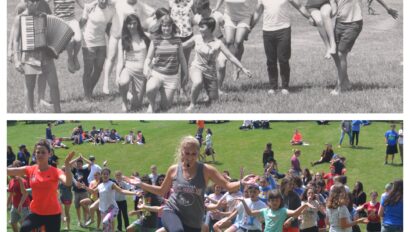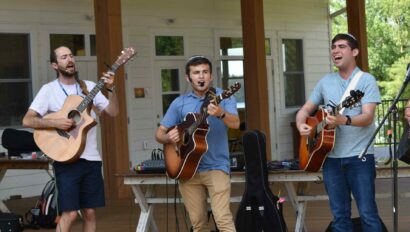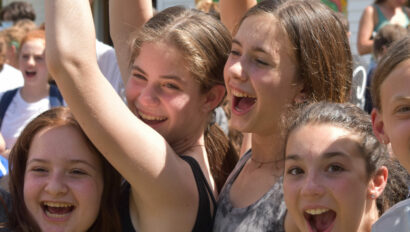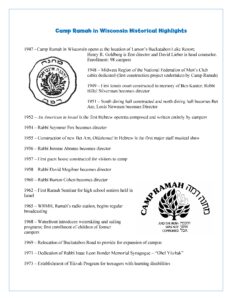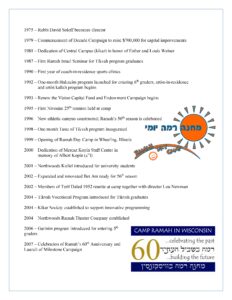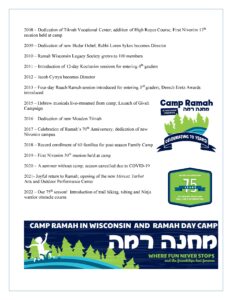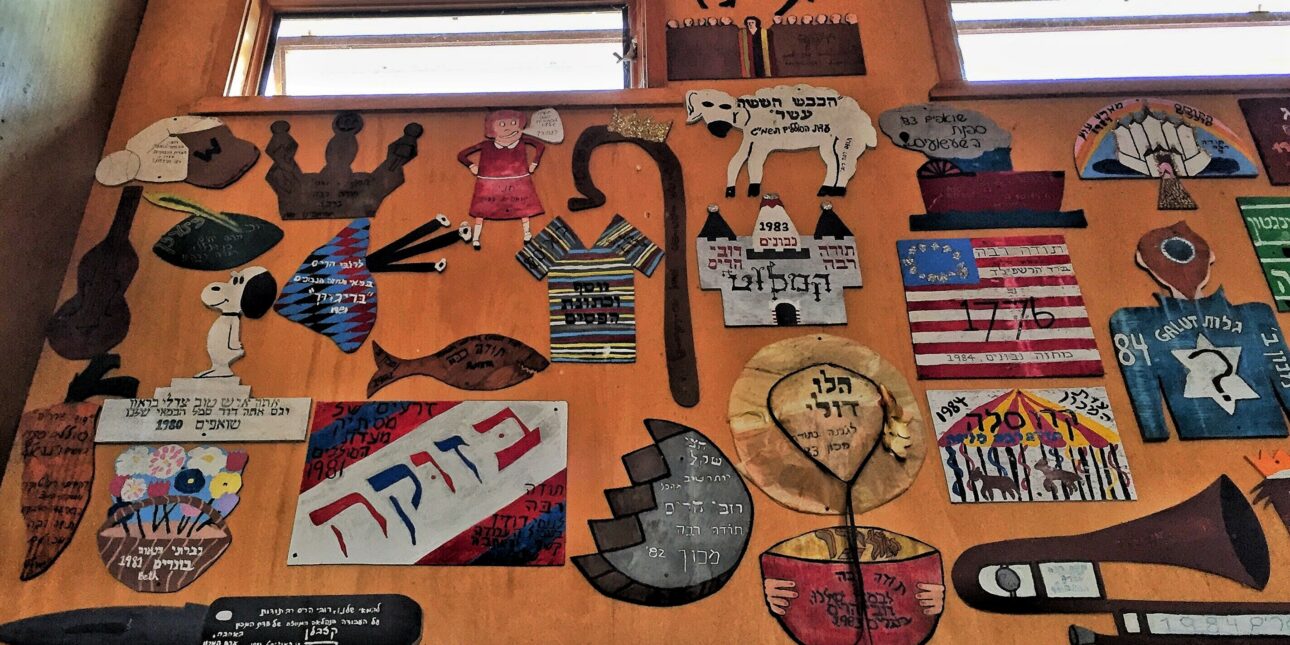
Play Plaques: Sharing Our Ramah Legacy
by Maytal Bach
This summer will be my eleventh summer at Camp Ramah in Wisconsin. By now, nearly every square foot of camp has a particular memory associated with it. No place, however, compares to the aptly named Beit ha’Am (literally: “the house of the people”), the auditorium/indoor basketball court where many camp-wide events happen . The Beit Am is a place where campers and staff are added to the collective memory of camp by means of a plaque from their machazemer, their eidah musical, nailed to the wall.
These plaques, presented by the Rosh Eidah following the completion of an energetic all-Hebrew Broadway musical and affixed to the wall on the last night of camp, represent the entire summer: the highs, the lows, and everything in between. These plaques remind us of the fun and laughter in every camp activity – from the challenge of climbing up the rock wall for the first time to the tears shed as we hug each other goodbye as we board the buses on the last morning of camp.
But the significance of the plaques reach beyond a single summer. From the Beit Am’s half court line I can trace my family’s years-long connection to Ramah Wisconsin. Click on this link to a 360 tour of camp: https://ramahwisconsin.com/virtual/ and click through to the “Beit Am Indoor Court and Stage” where play plaques I created in nagarut (woodworking) hang, as well as plaques commemorating plays I’ve performed in, plaques my siblings and cousins created when they were on art and woodworking staff, and finally a plaque that goes back to the beginning of it all. When my eema (mom) was a play director in 1982, rather than keep to the tradition of the plaque being a gift from the campers and staff to the director to take home as a keepsake, she asked that camp hold on to it. Her plaques hang in the first section of the wall, mine hang at the end. In between, years of stories and friendships are preserved in a timeline of increasingly intricate wood and glass assemblages.
More than pieces of art that are merely interesting to browse and admire, the play plaques serve as a public and physical tribute to our summers that we can return to year after year. Each summer we append eight new narratives to the Beit Am walls. The traditions of camp continue to be passed as we share in our Ramah experiences with people from 1947 and into the future. I hope you will enjoy, as much as I do, stepping through this timeline of the camp’s past and future.
These walls not only unite campers across time, but also unite us across geographical distance. All the Ramah camps share some overlap in the plays we put on, in the z’mirot and songs we sing, the pe’ulot (activities) we participate in. These walls remind us that by going to Ramah we are joining a community of Ramahniks who we can immediately bond with when we meet them on Ramah Israel Seminar or a gap-year program in Israel, in college, in our workplaces and as we move throughout future lives.
Soon, many of us will get to be part of installing our 2022 plaques on the wall following what we know will be an incredible summer and we mark our morashah, legacy, on the wall of the Beit Am for us to revisit year after year.
Maytal Bach is a rising Senior at Brandeis University where she majors in Public Health and Anthropology, and minors in French and Francophone Studies. She spent the past year as a research fellow at the Lurie Institute for Disability Policy. This is her 11th summer at camp and first time as a Rosh Eidah! This Kayitz she hopes to finally climb the Iceberg and beat Jacob and JAR in a tennis match (please reach out if you would like to take on either of these challenges with me!). She cannot wait to return to camp as Rosh Machon 2022!

